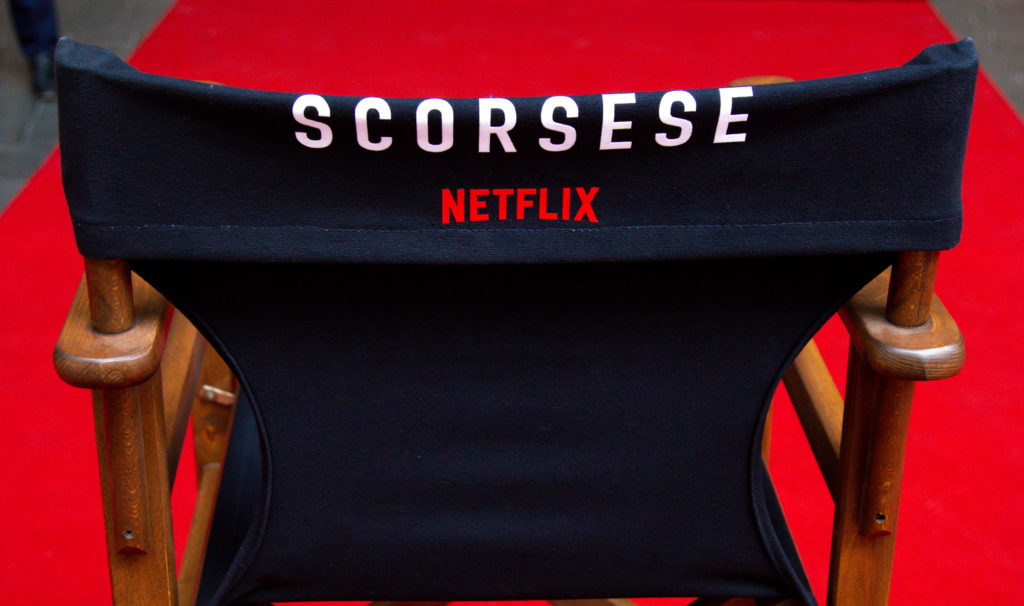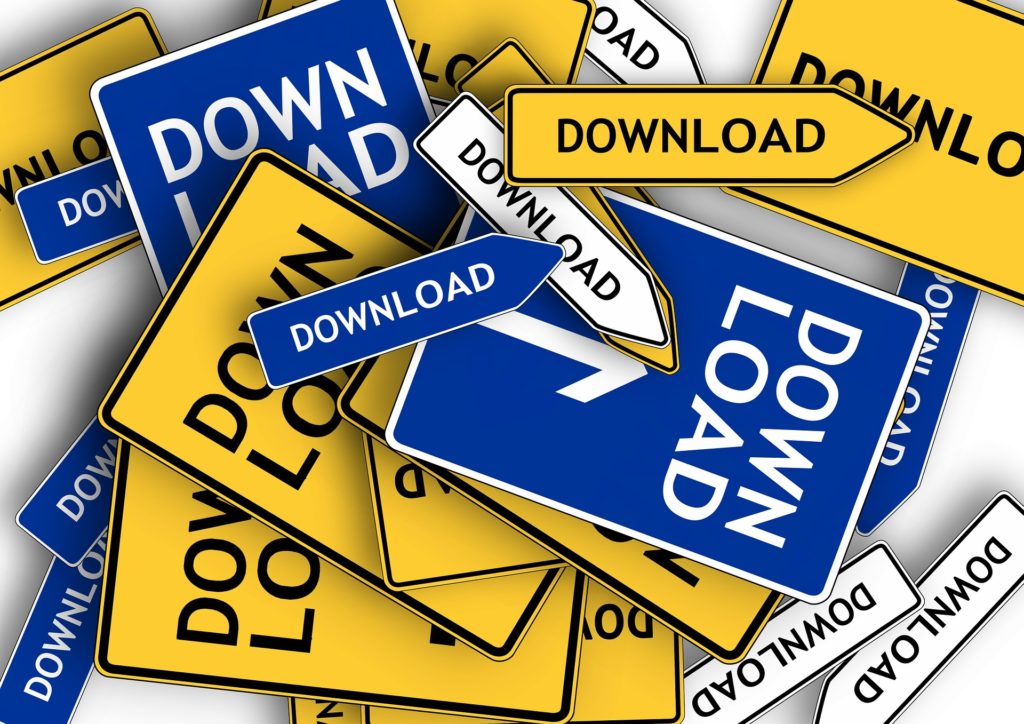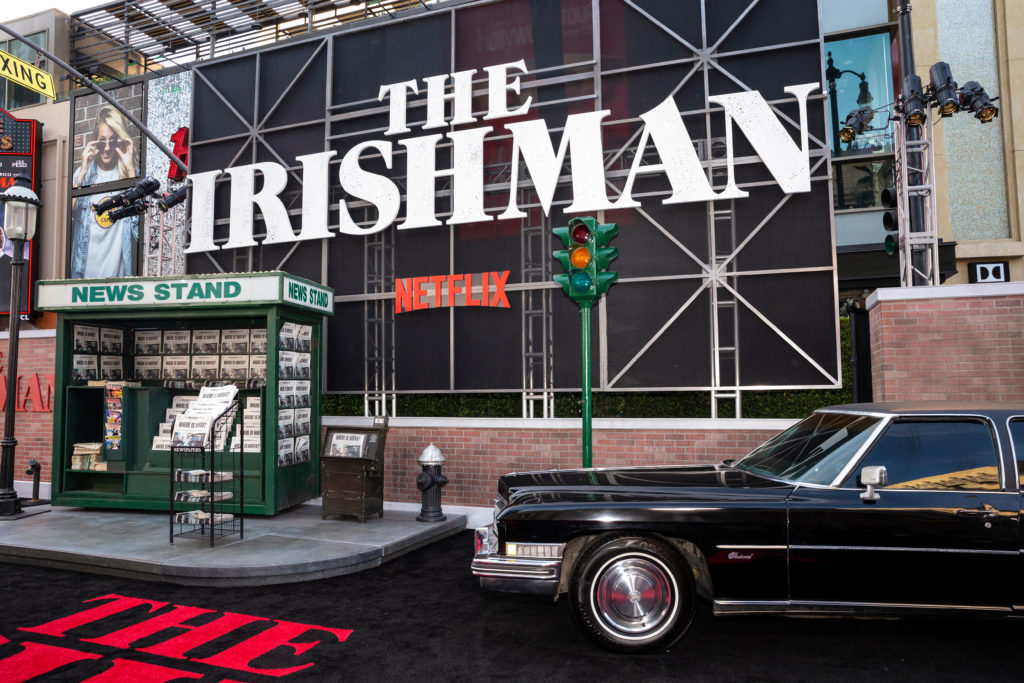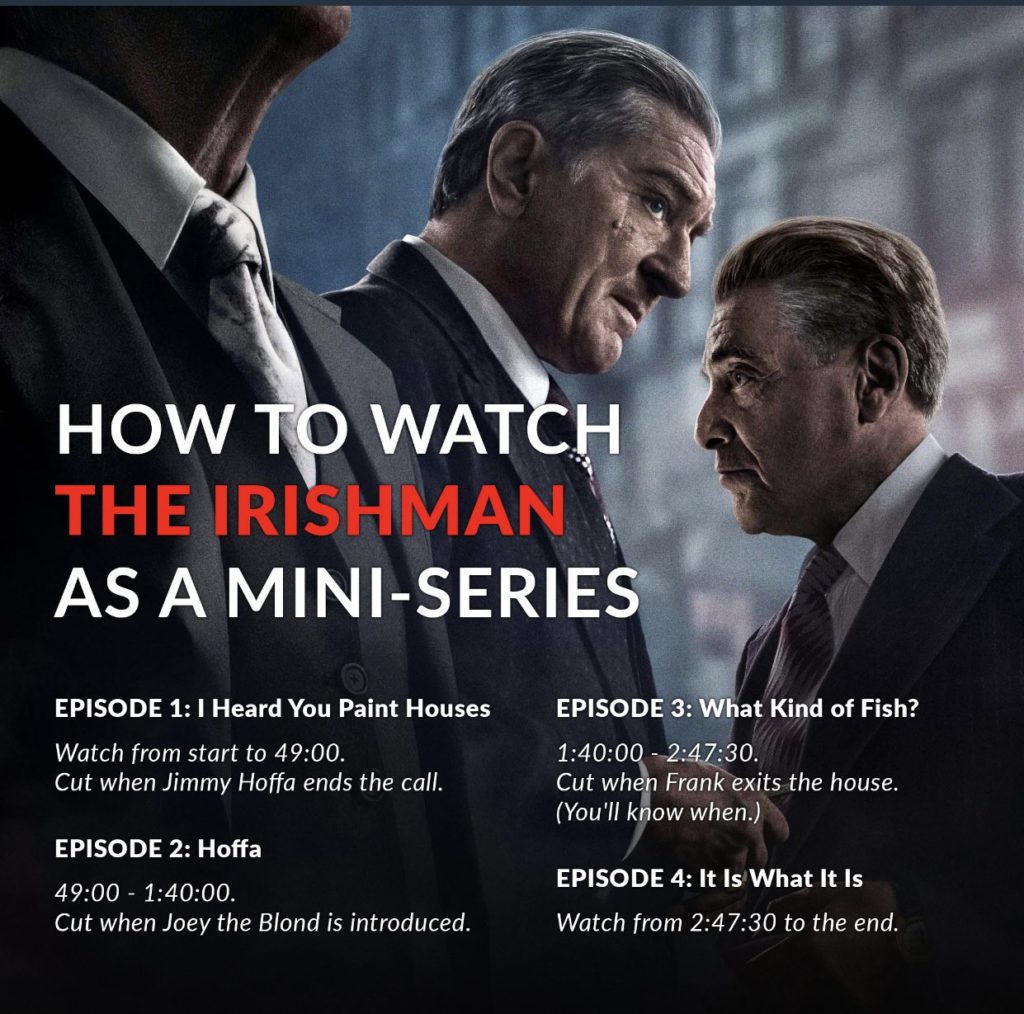
Welcome to our last #TBT of the year. Today’s post is a journey five years back into the JacoBLOGosphere. At that time, the conversation was about measuring success in the changing world of media. It coincided with the release of Martin Scorsese’s 3-hour film, The Irishman.
Unlike his other classics, however, this film was his first to be directly released on Netflix. And as you’ll read, it spurred a controversy about how movies are measured in the digital streaming world versus butts in seats at the neighborhood multiplex.
Oddly enough, we are right now on the cusp of another measurement kerfuffle, this one revolving around the change in how Nielsen calculates quarter-hour crediting in PPM. For the January 2025 rating period in metered markets, the gold standard will be reduced from 5 minutes down to just 3 minutes.
If this sounds like program director minutia or just another case of splitting hairs, it could turn out to be a big deal for radio at a time when sellers are in need of a boost, even if it sounds like a case of statistical steroids. It’s been another tough year for traditional radio sales as marketers continue to shift their emphasis away from broadcast to the digital realm.
It’s a big reason why we brought Chris Brunt, our digital revenue specialist, on to our team exactly one year ago. Since joining us, Chris has embraced the challenge, now working with commercial, pubic, and Christian music radio stations. He’s moving the needle.
I can only hope 2025 ushers in a period of renewed success for radio company revenues, no matter what form it takes or the platforms that drive it. – FJ
December 2019
One of the most-buzzed about Netflix events in recent years is The Irishman, a film by the iconic Martin Scorsese. It’s a mob film that centers on Jimmy Hoffa and the Teamsters union, subject matter near and dear to those of us from Detroit. Hoffa disappeared from a restaurant just two miles up the street from Jacobs Media World Headquarters, an upscale eatery then known as Machus Red Fox Inn (it’s now Andiamo).
To be sure, it’s a coup for Netflix and its ability to attract some of the biggest names in Hollywood, from director Scorsese to an all-star cast. Interestingly, The Irishman had a short theatrical release a few weeks ago (qualifying it for Oscar awards and other honors), but then went directly to the Netflix menu. Its run-time of 3+ hours turns out to be especially convenient for on-demand viewing, allowing couch potatoes to take bathroom breaks or watch The Irishman over a few sittings.
It was just announced The Irishman is nominated for a Golden Globe in the “best drama” category. Many other Netflix films and shows look to dominate the Globes again this year.
Yet, there’s an ongoing controversy about how on-demand streaming video is measured, vis-à-vis broadcast TV ratings and movie theater box office grosses. Since its release to Netflix, there are questions about just how successful The Irishman has been.
In its first five days on the video streaming service, Bloomberg News reports on Nielsen data showing that more than 13 million viewed The Irishman – a truly strong start for this mobster film, starring Al Pacino, Robert de Niro, and Joe Pesci. Also in the cast are a few personal favorites, including Steven Van Zandt and Jesse Plemons. Impressive, right?
But digging a bit deeper into the data shows that more than 80% of those who checked it out never got all the way through the film in one sitting. Bloomberg’s Lucas Shaw reports that’s not atypical for Netflix films. Both Bird Box and El Camino also suffered from incomplete viewing. Nearly 9 in 10 never made it through El Camino, a spin-off of the highly popular Breaking Bad series.
And yet, Netflix (and many others) are lauding The Irishman as a hit. And then calls into question exactly how that’s defined in the on-demand universe.
 You podcasters know what I’m talking about. Success has been traditionally measured in terms of downloads, perhaps the least important indicator of success. We know that many podcasting fans never get around to listening to shows and episodes they’ve downloaded in the first place.
You podcasters know what I’m talking about. Success has been traditionally measured in terms of downloads, perhaps the least important indicator of success. We know that many podcasting fans never get around to listening to shows and episodes they’ve downloaded in the first place.
And among those who start, many simply don’t make it through the entire podcast. Granular data is sadly lacking in the podcasting space, despite how much money is flowing in.
Yet, downloads have become – perhaps by default – the podcasting industry’s standard of success. You always hear podcasters, consultants, and analysts talk about download data, download minimums, and other metrics that use the same type of incomplete numbers Netflix ballyhoos.
There’s no doubt 13 million viewers in the first few days after release is impressive. But it doesn’t equate to how many consumers actually plunk down $10 to see a film at a theater (as well as buy refreshments).
In contrast to these podcast downloads, I think about broadcasters – both TV and radio – sweating their TSL or TSV (time spent viewing) numbers, trying to extend or create occasions, and encourage consumers to “stay tuned.” If it were just a matter of tune-in without having to sweat time-spent, radio programming would be a much easier challenge to navigate.
Sure, “cume” – the rough equivalent of the download – matters, but no sales staff, whether it’s the big rep firms in New York or the local teams pounding the streets,  uses those big numbers to market their radio or TV brands. Advertisers don’t accept it. That’s because listening duration is an important indicator of a show’s true success, not to mention the greater likelihood listeners and viewers will be exposed to advertising or even product placement.
uses those big numbers to market their radio or TV brands. Advertisers don’t accept it. That’s because listening duration is an important indicator of a show’s true success, not to mention the greater likelihood listeners and viewers will be exposed to advertising or even product placement.
Radio programmers work hard for every minute of listening, often parsing PPM data down to the most granular of measures. It is about hanging on to an audience, winning quarter-hours, and getting credit for every bit of tune-in. That equates to engagement, and even loyalty to a personality, a show, or a sporting event.
Contrast that with download data for on-demand video and audio, and you can understand the strange dichotomy taking place. Podcasts and Netflix shows get the benefit of the doubt – an advertising hall pass. There’s a misplaced level of trust that download data is somehow a valid indicator of consumption. The broadcasting side, however, is teeming with doubt and raised eyebrows about the efficacy of traditional media in an on-demand world.
I’m a fan of Marketoonist Tom Fishburne, a savvy observer of the media world around us. More often than not, Tom can say more in a handful of frames than most of us can with 1,000 word essays. In my email box yesterday was Tom’s new cartoon – a statement about how pundits, analysts, and so-called advertising mavens somehow discount marketing tools, always in search of “the next big thing.”

At this moment in time, on-demand media is the Holy Grail. And the dollars – in the millions and millions – are flowing into and out of the space. Meanwhile, when it comes to traditional broadcast programs and shows, marketing demand continues to ebb. Netflix’s production budget is now north of $5 billion annually, while the so-called Big 3 TV networks lag behind.
And podcasts are now beginning to get rewarded big-time. It was announced last week the creators and stars of the My Favorite Murder podcast inked a $10 million deal with Scripps’ Stitcher platform. The Wall Street Journal indicates there will be more of these deals in the works, especially given the competitiveness of Spotify, iHeartRadio, and other major podcast players. To be fair, My Favorite Murder isn’t just about downloads – the podcast and its hosts have proven their drawing power, packing auditoriums and selling loads of merch.
But how do we provide balance and context to the larger media conversation about popularity, engagement, and marketing effectiveness? Yes, on-demand audio and video are popular platforms, gaining momentum with each passing year. But traditional media – as well as many of the techniques depicted in the Tom Fishburne’s latest cartoon commentary – didn’t just become irrelevant in the face of Bird Box and Serial.
Advertisers are always looking for the bright shiny object. And these days, it’s podcasts. Intuition is an important attribute for marketers, but running on faith that download data provides a statistical foundation for placing advertising bets is specious.
In the meantime, there’s a hack (at right) to help you watch The Irishman, assuming you’re not going to make it one sitting. You might want to use it to help you chop up this film into four more bite-sized portions. And maybe you’ll end up in that small minority of viewers who actually get through the whole thing.
PS: To license this Marketoonist cartoon for a presentation, blog, or newsletter, go here.
PPS: Local TV station, WDIV here in Detroit, has launched a podcast series around Jimmy Hoffa – Shattered. Zak Rosen and Jeremy Allen (who presented at our  Podcast Movement sessions) produced it. You can access the podcast here.
Podcast Movement sessions) produced it. You can access the podcast here.
Interesting enough, they recently staged the podcast’s kick-off party at Andiamo – yes, the former Machus Red Fox Inn – the last place Hoffa was seen alive.
- What If Radio Tried Something Right Out Of Left Field? - May 9, 2025
- Why Radio PDs Are A Lot Like NBA Coaches - May 8, 2025
- Memo To Radio: We Have Met The Enemy And It Is… - May 7, 2025





Our superior tech can track and report back, addressing the granularity data issue on podcasts. That is when we have time and the need to to apply it. Anyone want to order and/or fund that project?
I’m just saying…we can do that.
The outstanding Broadcast Engineers and Scientists are ALWAYS working to offer better sound, more connections and new / efficient ways to deliver our licensed content. Merry Christmas & Happy 2025 to All with admiration and thanks, 1220watx.com Classics!